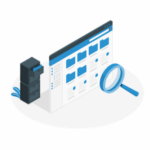Legislative action days give members of a trade or professional association the opportunity to meet directly with lawmakers and share their priorities. These events are a powerful way to turn ideas into action. They allow you to schedule meetings, prepare talking points and build momentum around your key issues.
This guide walks through how to plan a legislative action day from start to finish. You’ll learn how to set goals, choose the right timing and organize a smooth experience for everyone involved. A well-run lobby day builds awareness, strengthens your relationships with legislators and helps your members feel heard. Let’s start with the planning basics.
Understanding the Purpose and Planning Basics
What Is a Lobby Day or Legislative Action Day?
A lobby day, also called a legislative action day, is an organized event where association members meet with lawmakers to share policy priorities. The terms are often used interchangeably, and both describe the same goal: a dedicated day of advocacy.
Learning how to plan a legislative action day means organizing meetings, preparing briefings and guiding outreach efforts. Common goals include influencing policy, educating legislators about industry issues and making sure member voices are heard. Starting with a clear definition helps align your team and set the right tone for planning.
Legislative action days are especially valuable when your members are affected by new laws, regulations or licensing changes. Whether your goal is to raise awareness, push for funding or protect your members’ interests, a well-planned lobby day helps make those conversations happen face to face.
Set Clear Objectives Early
Before anything else, decide what you want to achieve. Your goal might be to inform lawmakers about a new licensure requirement, advocate for funding or raise your association’s visibility. Clear objectives help shape every part of the day, from who you invite to the talking points you share.
Define how you will measure success. That might include the number of meetings held, survey responses from members or follow-up from legislative staff. When everyone understands the goal, the rest of the planning process becomes much easier.
Build a Planning Timeline
Start planning three to six months in advance and break the process into clear phases:
- 3–6 months out:
- Choose your date and format (in person, hybrid or virtual)
- Scout and book your venue or virtual platform
- Coordinate with your government affairs team or lobbyist
- 2–3 months out:
- Begin outreach to members and lawmakers
- Send save-the-date or invite communications
- Start drafting your agenda and key materials
- 1 month out:
- Finalize fact sheets, talking points and leave-behinds
- Host a member training or prep session
- Confirm meeting times and attendee assignments
- 1–2 weeks out:
- Test tech tools and prepare printed or digital packets
- Send event reminders and final logistics to attendees
- Post-event:
- Send thank-you notes to lawmakers and attendees
- Distribute a quick feedback survey
- Track outcomes and log follow-up actions
A timeline like this helps keep your team aligned and prevents last-minute stress.
Logistics and Planning Steps
1. Secure Your Location and Date
Decide early whether your event will be in person, hybrid or virtual. For an in-person lobby day, book a venue near the statehouse or committee offices. If the event is hybrid or virtual, choose a reliable platform and test it well in advance. For associations that opt for a digital element, our guide on how to plan a virtual event offers best practices for choosing platforms and maximizing remote engagement.
Confirm that your selected date aligns with the legislative calendar. Hosting while lawmakers are out of session can derail your goals. Securing the right time and place is a key step in how to plan a legislative action day that works for both your members and your elected officials.
2. Coordinate Lawmaker Meetings
Once your date is set, begin reaching out to legislators’ offices with clear, timely meeting requests. Prioritize lawmakers who represent your members’ districts, serve on relevant committees or have supported your issues in the past.
Use a tracking system like a shared spreadsheet or your association’s CRM to monitor responses, confirm meeting times and assign attendees. Keep everything organized so your members feel prepared and confident. Coordinated outreach is a key part of how to plan a legislative action day that makes the most of everyone’s time.
3. Prepare Your Members to Advocate
Good advocacy starts with good preparation. Share clear, concise talking points that outline your key issues, what you are asking lawmakers to do and how the issue affects members locally. Give your attendees the context they need to feel confident walking into each meeting.
Host a short webinar or create a prep guide that covers what to expect. Include tips on how to introduce themselves, how to make their case and what to do after the meeting. If possible, pair first-time attendees with experienced advocates so no one feels overwhelmed. The more prepared your members are, the more professional and persuasive your lobby day will be.
4. Create and Distribute Materials
Give your members leave-behinds that make an impression. Create fact sheets, one-pagers and data summaries that clearly support each ask. Brand all materials with your logo and contact information so legislators remember who you are.
Decide whether to print materials or provide them digitally. For virtual events, send them in advance along with meeting links and reminders. Having polished, well-prepared materials shows professionalism and helps lawmakers follow up after the event. It is also a key step in how to plan a legislative action day that delivers lasting impact.
5. Offer On-Site or Virtual Training
Start the day with a brief kickoff session to get everyone aligned. Review the event goals, walk through the schedule and answer last-minute questions. Include a quick role-play or sample meeting to help attendees feel comfortable.
If your event includes virtual participants, double-check that tech is ready. Test headsets, video links and breakout rooms ahead of time. A short training session builds confidence, encourages teamwork and prepares your members to advocate effectively.
6. Promote the Day Internally and Externally
Start promoting your lobby day early. Use email campaigns, community posts and social media to encourage attendance. As the date approaches, send reminders with schedule details, prep materials and last-minute tips.
After the event, share highlights with your broader audience. Post photos and member quotes, tag lawmakers when appropriate and consider issuing a short press release if the topic has public interest. Consistent promotion boosts engagement, strengthens your brand and shows how your members take action.
For larger events like conferences or workshops, you may also want to use registration tools to streamline attendance and communication. Explore our breakdown of the best event registration apps in 2025 to find the right fit.
7. Keep the Day Organized and Member-Focused
Set up a check-in station or virtual welcome room to greet attendees and get everyone settled. Provide name badges or login details, answer questions and make sure the day starts smoothly. Assign a staff member or volunteer to be available throughout the event in case schedules change or someone needs help.
Make it easy for participants to follow the schedule. Print simple agendas or share a digital version that updates in real time. Encourage members to share their experience by taking photos or screenshots and posting them using your event hashtag. It shows your members are active and reminds lawmakers that your association shows up and speaks out.
To take event-day engagement further, see our list of 10 best event engagement ideas.
8. Send Thank-Yous and Recaps
Follow up within 48 hours of your event. Send personalized thank-you notes to every legislator’s office you met with. At the same time, share a brief recap with all participants. Highlight any key wins or meaningful conversations and include links to photos or quotes if available.
Timely follow-up reinforces your association’s professionalism and helps lawmakers remember your visit. It also shows members that their time made an impact and sets the tone for future engagement.
For more ideas on extending the event’s impact, check out our post on post-event engagement strategies.
9. Track Outcomes
Gather feedback from participants shortly after the event. Use a short survey or follow-up calls to understand what went well and what could improve. Track the number of meetings held, follow-up requests from legislators and any progress on key issues.
Also keep a record of press mentions and social engagement. Count how many posts used your event hashtag and how many members shared their experience. This data helps measure your event’s impact and gives you valuable insights to guide future advocacy efforts.
10. Keep the Momentum Going
Keep the conversation going after the event. Share follow-up templates that members can use to email or tag their lawmakers. Post quick recap content or downloadable resources in your member portal to reinforce your message.
Check in regularly with your members. Include advocacy updates in your newsletter or host a short follow-up webinar to revisit your policy goals. Small, steady touchpoints help strengthen your message and build lasting momentum.
Make Your Voice Heard
A well-organized legislative action day gives your association a powerful way to influence policy and build relationships with lawmakers. When you set clear goals, follow a strong planning timeline and keep members engaged throughout the process, your impact grows over time.
Use this guide to plan a legislative action day that runs smoothly and creates momentum. Ready to take the next step? Start mapping out your calendar or explore how MemberClicks tools to help streamline every phase of your advocacy work. Don’t hesitate to get in touch to see how we can support your legislative action day.
















